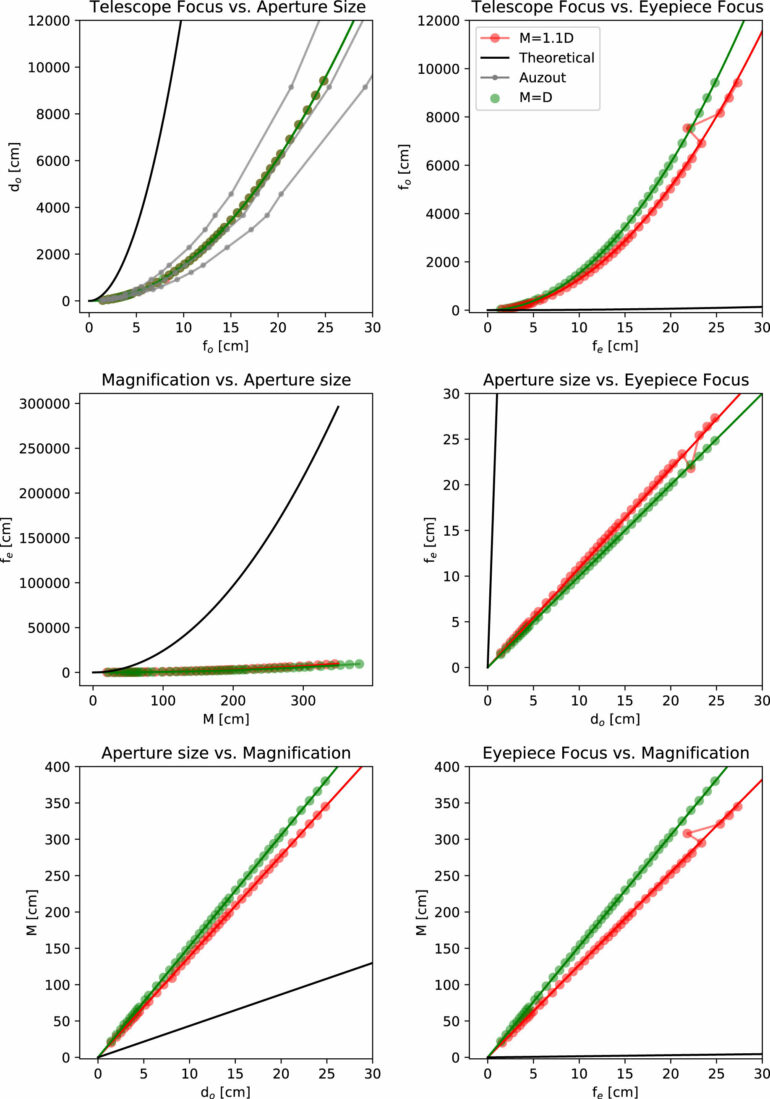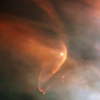Christiaan Huygens built excellent lenses in the 17th century, but his telescopes lacked sharpness in comparison with what was possible at that time. In a recent study, Dr. Alex Pietrow, researcher at the Leibniz Institute for Astrophysics Potsdam (AIP), investigated Huygens’ calculations and has concluded that the Dutch astronomer and mathematician was probably near-sighted and would have needed eyeglasses to improve his telescopes.
Christiaan Huygens was a 17th-century Dutch scientist who revolutionized the fields of optics, mechanics, timekeeping, and astronomy. For example, he invented the pendulum clock, created a wave theory of light, discovered Saturn’s moon Titan, and described the true nature of Saturn’s rings. His telescopes and lenses are known to be of superb quality for the time, but were, nevertheless, unable to reach the same sharpness as those built by his rivals.
A new study recently published in the journal Notes and Records: the Royal Society Journal of the History of Science takes an unusual look at Huygens’ work and suggests that the lack of sharpness in his lenses was caused by a deficiency in Huygens’ eyesight: the scientist may have had myopia (nearsightedness), a condition which causes distant objects to appear blurred.
The study was performed by Dr. Alex Pietrow, a postdoctoral researcher at AIP in the Solar Physics section and science history enthusiast. He examined the rules and equations set up by Huygens for designing telescopes, and found their performance lacking when compared to modern optical principles.
Huygens’ approach to lens-making was experimental and relied on trial and error, meaning that he would test the combinations of various lenses and eyepieces to find the best working telescope. Once he did so he created tables and equations, which he then used to build telescopes with the desired magnification.
However, the telescopes that the Dutch scientist designed using these equations fell short of the theoretical optimum. For example, a former director of the Leiden Observatory in the Netherlands, Frederik Kaiser, stated in 1846 that Huygens built pristine lenses, but his telescopes had a noticeably inferior resolving power compared to contemporary refracting telescopes.
The new study suggests that Huygens’ eyesight may have been the reason. The difference between his equations and modern optics could be explained by prescribing Huygens eyeglasses with –1.5 diopters. “This is likely the first ever posthumous eyeglass prescription ever, and done for someone who lived 330 years ago at that,” says Alex Pietrow. Huygens’ nearsightedness was mild enough to not cause any problems in daily life in the 17th century and thus remained unnoticed.
A person with this visual defect can read fine at small distances, but has trouble deciphering letters that are far away. This is problematic in the modern world when recognizing traffic signs or driving a car, but 300 years ago this would not have been a problem. Even if Huygens was aware of the shortcomings of his eyesight, he would not have needed glasses.
Alex Pietrow elaborates, “My theory is that because Huygens did not need eyeglasses in daily life like his father, he probably did not think about it when making telescopes. So he unconsciously included this eye defect into his designs.” This would also explain why Huygens did not manage to get past this arbitrary limitation to his telescopes: he could not discern further improvements.
More information:
Alexander G. M. Pietrow, Did Christiaan Huygens need glasses? A study of Huygens’ telescope equations and tables, Notes and Records: the Royal Society Journal of the History of Science (2023). DOI: 10.1098/rsnr.2022.0054
Provided by
Leibniz-Institut für Astrophysik Potsdam
Citation:
An eyeglasses prescription for Christiaan Huygens after 330 years (2023, March 2)



